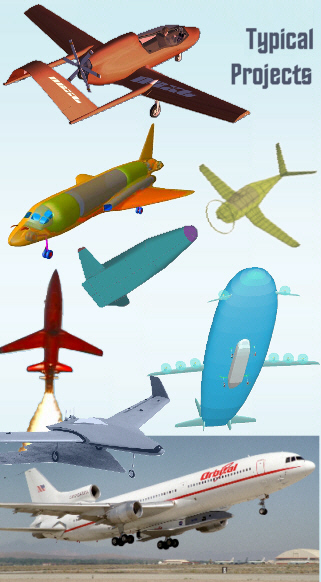…the Science of the Possible

Aircraft Design Research LLC (ADR), the successor company to Conceptual Research Corporation, is an aerospace design and research company with a primary focus on the conceptual design of aircraft and spacecraft. ADR is led by industry veteran Dr. Daniel P. Raymer, well-known aircraft designer and author of the world’s leading aircraft design textbook.
Aircraft Design Research LLC can develop a vehicle concept to your requirements, analyze and optimize it, and then bring it to reality through a multi-company partnership. ADR provides engineering design reviews, methods development, and training in aerospace vehicle design methods and tools. ADR also markets Dr. Raymer’s powerful RDSwin Professional aircraft design software.
Says Robert Rist, President of Ohio Airship Inc., who hired Dr. Raymer to develop their hybrid airship Dynalifter: ‘Dan has been a great asset to our critical design efforts. We have used his design through many meetings with investors and government. Not one person argues the facts/physics Dan showed in his studies. He’s a great guy to work with.’
Aircraft Design Research LLC is located and incorporated in the State of South Carolina. ADR is located in Hilton Head, minutes from that airport and not far from the Savannah and Charleston airports. In addition to its own office space, CRC operates as a virtual company using partner subcontract companies and experienced consultants to accomplish the customer’s objectives in a timely and innovative fashion.
For further information or to request a quote for services, email to
Aircraft Design Research LLC
Or phone: 310 577-3773